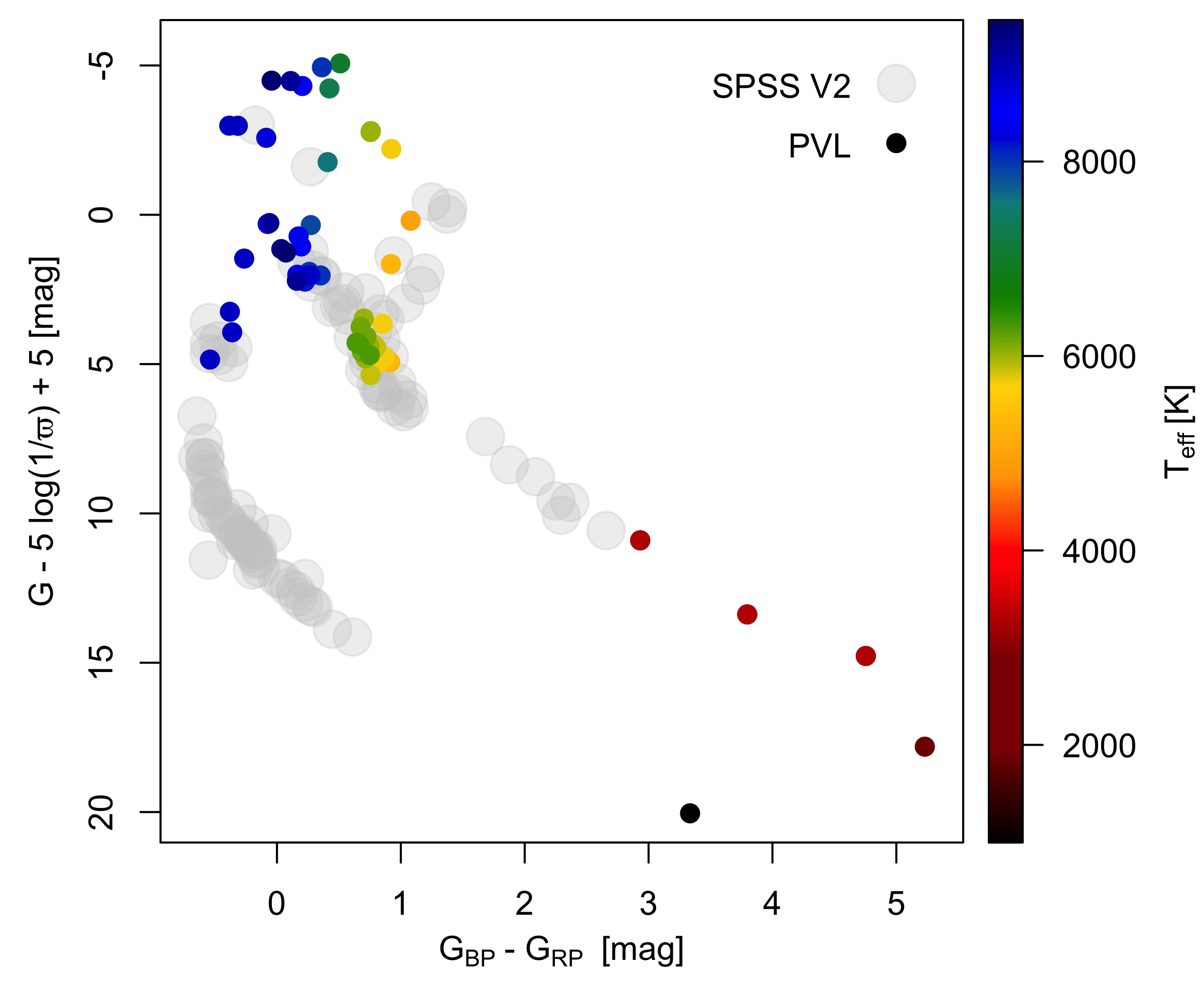5.6.1 Passband Validation Library
To thoroughly test any systematic colour or magnitude trend, it was deemed necessary to widen the variety of stars available for the determination and validation of the Gaia passbands, including stars that are normally not reliable as accurate SPSS. The passband validation library (PVL) was thus built, including high quality spectra from the literature that did not meet the full set of requirements to become SPSS. Examples are very hot and bright O and B stars or extremely red stars (including brown dwarfs), that are often variable. Only variations below a few percent in flux were allowed in the PVL V1. More details can be found in Pancino et al. (2021).
The PVL V1 was not used for the flux calibration of Gaia DR3, but it was used to constrain the passbands thanks to the inclusion of stars with different SEDs, along with other objects such as QSOs (see external calibration in Section 5.4.1). PVL V1 was instrumental in mitigating in Gaia DR3 the colour and magnitude trends that were previously identified in Gaia DR2 (Evans et al. 2018; Casagrande and VandenBerg 2018; Maíz Apellániz and Weiler 2018).

Figure 5.46 shows a view of the PVL V1 set in the absolute colour-magnitude plane.